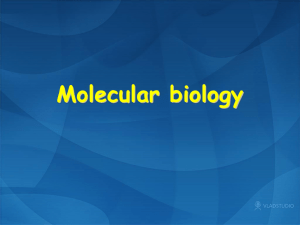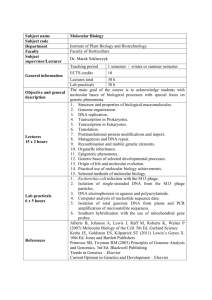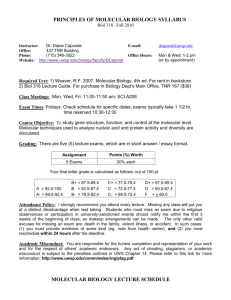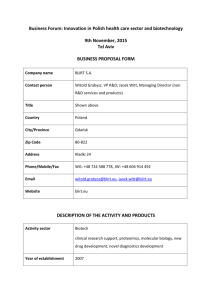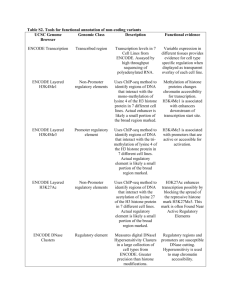Profile
advertisement
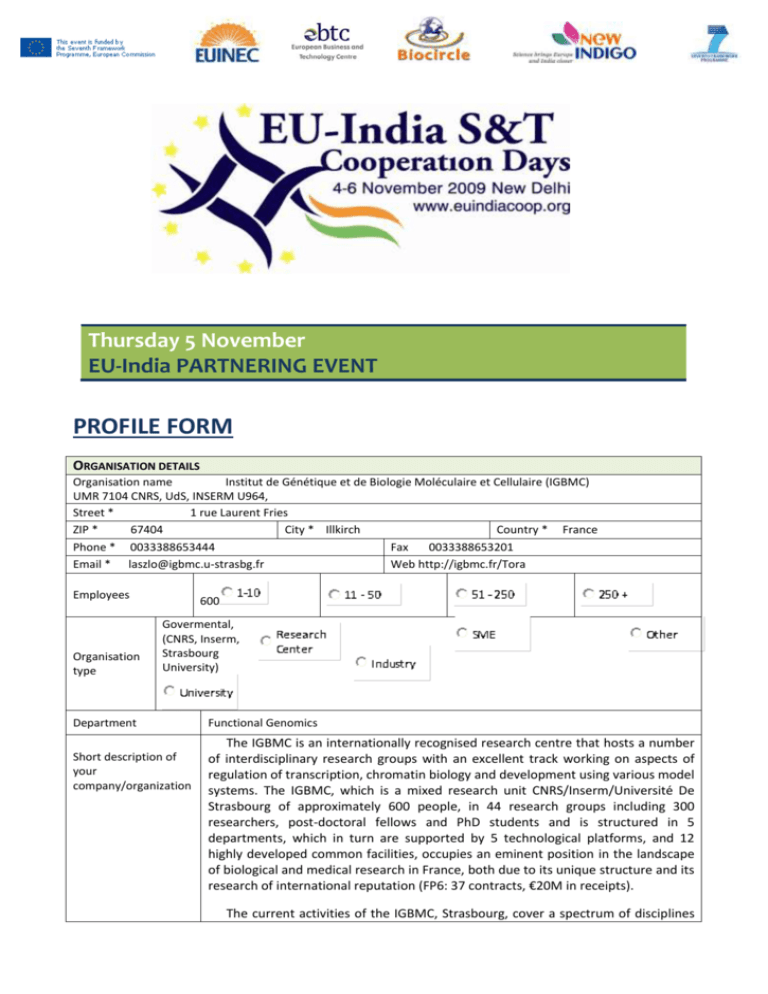
Thursday 5 November EU-India PARTNERING EVENT PROFILE FORM ORGANISATION DETAILS Organisation name Institut de Génétique et de Biologie Moléculaire et Cellulaire (IGBMC) UMR 7104 CNRS, UdS, INSERM U964, Street * 1 rue Laurent Fries ZIP * 67404 City * Illkirch Country * France Phone * 0033388653444 Fax 0033388653201 Email * laszlo@igbmc.u-strasbg.fr Web http://igbmc.fr/Tora Employees Organisation type 600 Govermental, (CNRS, Inserm, Strasbourg University) Department Short description of your company/organization Functional Genomics The IGBMC is an internationally recognised research centre that hosts a number of interdisciplinary research groups with an excellent track working on aspects of regulation of transcription, chromatin biology and development using various model systems. The IGBMC, which is a mixed research unit CNRS/Inserm/Université De Strasbourg of approximately 600 people, in 44 research groups including 300 researchers, post-doctoral fellows and PhD students and is structured in 5 departments, which in turn are supported by 5 technological platforms, and 12 highly developed common facilities, occupies an eminent position in the landscape of biological and medical research in France, both due to its unique structure and its research of international reputation (FP6: 37 contracts, €20M in receipts). The current activities of the IGBMC, Strasbourg, cover a spectrum of disciplines in cell- and molecular biology as well as biophysics and developmental biology. Almost 600 scientists from 47 different nations are working in about 44 teams on the following issues: -Regulation of basal and activated RNA polymerase II transcription -Biochemistry, genetics and molecular biology of nuclear receptors -Structure determination of proteins and nucleic acids -Biology and molecular genetics of different cancers -Human molecular genetics -Developmental and molecular biology of C. elegans, Drosophila, zebrafish and mouse - Neurobiology Resources made available to the groups: -DNA sequencing (high throughput sequencing will be available from 2009) -peptide synthesis, MALDI-TOFF mass spectrometry, -poly- and monoclonal antibody facilities and services - cell culture facilities and services -baculovirus overexpression service -transgenic animals, ES cell facility, -crystallography, X-ray defraction, NMR, electromicroscopy, -imaging platform -transcriptome platform -FACs analysis service, -bioinformatics platform PARTICIPANT Gender First name Last name Position male Title PhD, Laszlo Tora Research Director (DR1) at CNRS; Group Leader, PARTNERSHIP PROPOSAL EU-India partnering event session participation: Areas of activity (Free keywords) Molecular biology, LS1, Gene expression, genome wide, regulation, mammalian cells, chromatin, RNA Polymerase II, transcription, histone acetyl transferase complexes, cancer. PROJECT DESCRIPTION Title of your research project in one sentence Functional and genome wide characterization of histone acetyl transferase complexes in normal and cancer cells Transcription in eukaryotes is a tightly regulated, multistep process. Gene specific transcriptional activators, several different cofactors, often harbouring chromatin modifying activities, and general transcription factors are necessary to access specific loci in the chromatin to allow precise initiation of RNA polymerase II transcription. Post-translational modifications of histones have been correlated with the involvement of the chromatin in transcription activation or repression. One of the most extensively studied modifications is the acetylation of the highly conserved amino-terminal histone tails. Histone acetyl transferases (HATs) are thought to increase the decompaction of chromatin, which in turn increases the accessibility of factors that promote transcription Short description of project One of the most appealing questions in eukaryotic transcription is how activators can transmit their signals to the general transcription machinery to stimulate transcription in the context of a highly condensed chromatin environment. Another exciting question from the eukaryotic transcription regulation point of view is how stem cells can regulate their transcription networks to maintain their pluripotency and how these regulatory networks change when stem cells differentiate to various cell types. Stem cells have recently become the focus of intensive research, because they may be used in the future to generate cells and tissues for therapeutic purposes. Since their identification, many studies have been carried on the structure, role and function of different HAT complexes in yeast, however relatively little is know about the role and function of these complexes in metazoans and how these chromatin modifying complexes are involved in maintenance of pluripotency and differentiation. In the previous years we have devoted our efforts to the characterization of the human SAGA-type (GCN5- or PCAF-containing) complexes. However, in the past year others and we have discovered a novel GCN5- or PCAFcontaining complex, called ATAC (for Ada two a containing). We hypothesize that the increased complexity of GCN5- or PCAF-containing HAT complexes in metazoans, as compared to yeast, is required for metazoan specific functions such as cell pluripotency and differentiation. To better understand the function of the GCN5- or PCAF-containing HAT complexes in metazoans and begin to answer the above exposed two fundamental questions together, in our present project we propose: -to perform the biochemical and cellular characterization of SAGA and ATAC complexes in normal and cancer cells by using proteomics to identify a) the subunit composition of these complexes b) the normal and cancer cell interactome of ATAC and SAGA (GCN5- or PCAF-containing) c) the posttranslational modifications of the identified subunits -to identify direct ATAC and SAGA binding sites in the genome of normal and cancer cells by using chromatin immunoprecipiattion coupled high throughput sequencing (ChIP-seq) and bioinformatics -to identify ATAC and SAGA target genes and their role in normal and cancer cells and differentiation by using knockdown approaches coupled to global transcriptomic analyses -to identify deregulated pathways, networks and hubs regulated by the ATAC or SAGA HAT complexes in cancer cells, by using high throughput and newly developed bioinformatics techniques, tools and platforms. The present project will be built on the combined strengths of the partners, including molecular biology, chromatin, cancer biology, systems biology, genome research and bioinformatics. Description of expertise offered Molecular biology, chromatin, cell biology. Description of requested partner expertise Cancer biology, genome research and bioinformatics.
